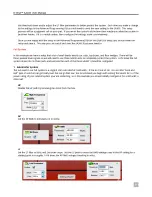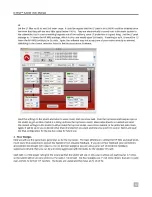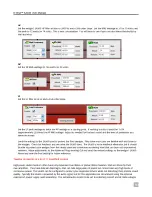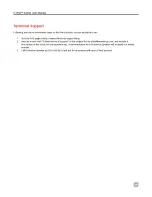
21
D-fend™ SA300 User Manual
this threshold down and/or adjust the LF filter parameters to better protect the system. Each time you make a change
to the settings in the Advanced Programming GUI you will need to send the new setting to the SA300. This setup
process will be a judgment call on your part. If you are at the controls all the time then maybe you allow the system to
be driven harder. If it is a rental system, then configure the settings more conservatively.
Once you are happy with the setup in the Advanced Programming GUI for this Dual Sub setup, you should name the
setup and save it. This way you can load it back into the SA300 if you ever need to.
Full System
In this example we have a setup that a lot of small bands would use: subs, top boxes, and floor wedges. There will be
three speaker-level signals so we will need to use three SA300 units to completely protect the system. Let’s break the full
system down into its three parts and see how the each of the three SA300’s should be configured.
1. Sub Woofer System
The sub used in our full system is a single 4 ohm sub rated at 1600 watts. It has an F3 at 60 Hz. It is an older “Rock and
Roll” type of sub that can get really loud, but not go that low. We recommend you begin with setting the SA300 for ¼ of the
power rating of your cabinet/system your are protecting, so in this example you should initially configure it for a 400 watt, 4
ohm load.
HF
Disable the HF path by removing the check from the box.
AP
Set the AP RMS to 400 watts (or 40 volts).
LF
Set the LF filter to 85Hz and 2nd order slope. Set the LF peak to twice the RMS wattage used in the AP setting for a
starting point (or roughly 1.414 times the AP RMS voltage if working in volts).






















